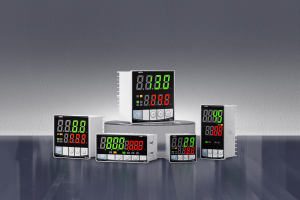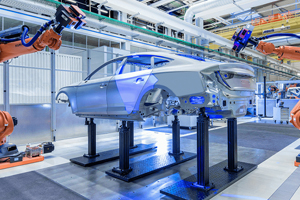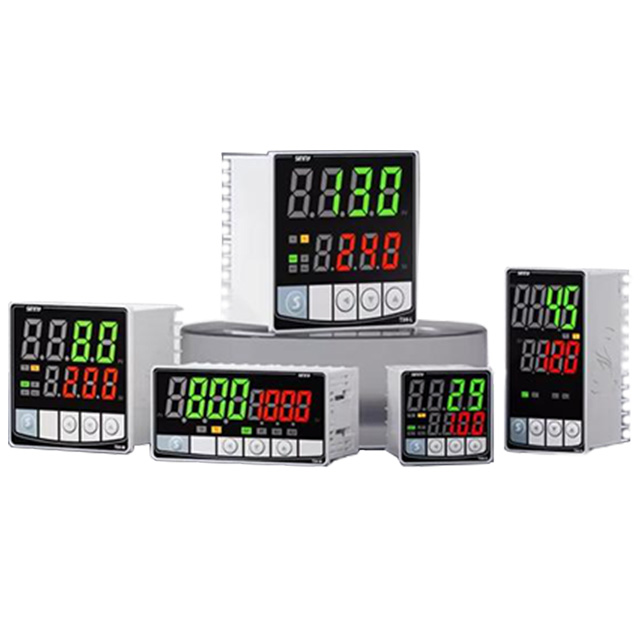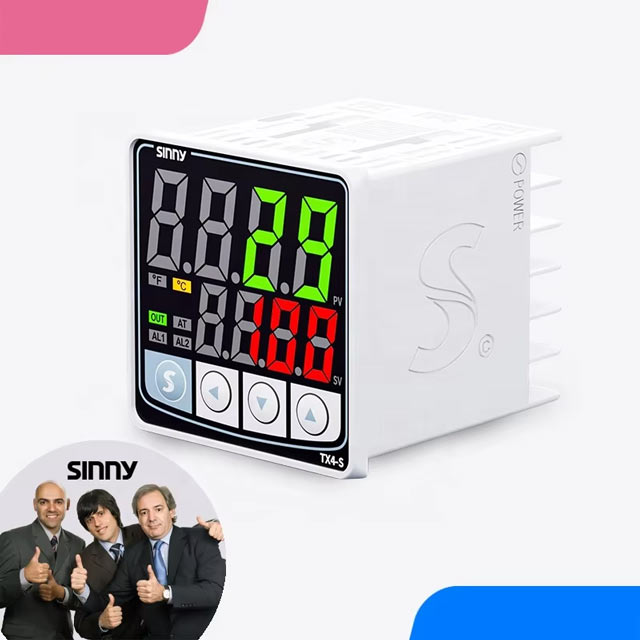This detailed overview of the 4 channel PID temperature controller will give you a better understanding
1. The following is a brief introduction to the topic:
The regulation of temperature is a basic requirement for countless industrial, domestic, and commercial applications. Precision in controlling thermal conditions can be crucial for optimizing performance, assuring product quality, maintaining operational safety and maximising efficiency. This applies to everything from complex manufacturing processes and research, through everyday household appliances and automotive systems. Among the most potent and effective methodologies for achieving this level of control is the Proportional-Integral-Derivative (PID) temperature control system. The 4 Channel PID temperature controller is a versatile and sophisticated device. This article explores it in detail. This article will explore the fundamentals of PID, its components and its operation mechanism. We'll also examine diverse applications and provide guidance for installation and maintenance. This system is complex, and understanding it will not only help users implement efficient temperature management solutions, but also highlight its importance in the modern advancement of technology. This article focuses on the 4 Channel version, which is particularly suitable for applications that require simultaneous control of multiple temperature zones.
2. PID Control: A Review of the Basics
It is important to understand the PID algorithm in order to get the most out of this 4 Channel PID temperature controller. The PID strategy is a mathematical technique that regulates a variable in a process by minimising the difference between the desired setpoint, and the process variable. PID stands for three terms: proportional, integral, and derivative. Understanding these components will help you fully understand the precision and power of PID controllers when it comes to temperature regulation.
Control (P) by Proportion: This term produces an output that is directly proportional the error instantaneous, which is defined as the difference between desired setpoint and actual measured temperatures. A larger error will result in a stronger control signal. P-control offers an initial immediate response but often results in residual steady state error. The temperature might not reach the setpoint exactly and may exhibit drift. This response is quantified by the 'proportional gains' (Kp). A higher Kp can lead to faster reaction, but it may also cause oscillations.
Integral Control (I): This integral control term eliminates the error at steady state that cannot be eliminated by the proportional term. The integral term calculates past errors cumulatively over time, and then produces an output which continuously re-adjusts in order to eliminate this discrepancy. If the error continues, it will grow the integral term, which in turn, changes the output of the controller until the problem is corrected. The integral winding-up can cause a slight delay in the control output, but this action will ensure long-term accuracy.
Control (D) Derivative: By analyzing the change in the error rate, the derivative term can predict future errors. The derivative term reacts to slopes of error curves, causing a dampening effect. This counteracts potential oscillations and overshooting often caused by P and I terms. The D-control stabilizes the system by reducing the rate at which the output changes. It also improves the transient response. It is susceptible to noise, and can destabilize a system when not tuned carefully, especially at low temperatures, where rapid changes are more common.
This synergistic interplay of the three terms allows a PID controller react quickly to changes (P), eliminates persistent errors with time (I) and prevents overshooting or oscillations. PID controllers are the best choice for many temperature control situations. The 4-channel version is ideal for systems that require independent zone management.
3. This article describes the architecture of a 4-channel PID temperature controller.
The components of a functional 4-Channel PID Temperature Control System are distinct, yet connected. Each component plays a crucial role during the phases of measurement, processing and implementation. Understanding these components is essential for design as well as practical application.
The Core Controller Unit (): It is the brain of the system and performs the PID calculation. It's usually based on a Microcontroller, which is a flexible integrated circuit that can run software algorithms. Or it could be a PID Integrated Circuit designed to implement the PID algorithm. It receives the input data and applies control logic to generate output signals.
Input channels (Temperature sensing): Each controller input, in this instance four, is capable of receiving signals from separate temperature sensors. The system can monitor and control four different temperature zones. The most common types of temperature sensor are thermocouples, which have a wide range, but require linearization. Resistance Temperature Detectors also provide accuracy and stability over specific temperatures ranges. Selection of the sensor depends on application-specific requirements such as temperature range, accuracy and response time.
Actuator Control: The controller has four channels of output that correspond to its four inputs. It can control up to four different heating and cooling elements. The ability to control each zone independently is what makes multi-zone operations possible. The outputs can be digital signals for controlling the heating element power or pulse width modulation (PWM). It is important that the design ensures the outputs are able to safely drive connected loads.
Interface User: This component allows interaction between an operator and a controller. The user interface is usually comprised of elements like a display, such as an LED or LCD screen, that shows current temperatures, the setpoints and status messages. Potentiometers or digital buttons are input mechanisms that allow users to adjust and set desired temperatures for each channel. Advanced controllers may have touchscreens, or connectivity (RS485 and Ethernet) options for integration with larger control systems. Many 4-channel controllers were designed with embedded applications in mind, which require minimal interaction from the user. However, an intuitive interface can improve usability and provide greater control.
Power Source: A stable, appropriate and reliable power supply is required for the entire controller system. A common 12V DC supply, particularly for mobile or vehicular application, is required. However, the voltage and current must be matched to the controller design as well as the needs of connected actuators. Power supply is used to convert incoming voltage from an external power source, battery or other sources into the 12V DC required by controller internal circuitry.
The components form closed loop control systems that work together for each channel. Sensors measure the temperature of each zone. The controller then processes this information, calculates a required action using the PID algorithm, and executes it. The continuous cycle is independent for the four channels and allows for simultaneous, precise control of several temperature zones.
4. What is a PID temperature controller with 4 channels?
A 4 Channel PID Controller operates in a dynamic and continuous cycle that includes measurement, comparisons, calculations, and actions. This creates closed loop control for each channel. This cycle is essential to understanding the controller’s ability to manage multiple zones at once.
The process starts with the sensor that continuously measures and records the zone temperature. This physical quantity is then converted into an electric signal. The signal is processed, e.g. amplified or linearized, if needed, and then sent to the controller core unit.
The controller will convert the received sensor signal into either a digital or analogue value that represents the current temperature in the zone (the PV or Process Variable). The controller compares the measured temperature PV with the setpoint temperature SP that was configured for this channel. This difference is the (E) value for this channel. It can be calculated by E = PV - SP. The error value is used as the main input for the PID algorithm in the zone controller.
This controller uses the PID algorithm and the error E to determine the control output u for each actuator. The calculation takes into account the current error, the history of previous errors (Integral terms), and the rate at which the error is changing (Derivative terms). This is the formula that's usually used: Output (u), = Kp*E + Ki*E dt + dE/dt
The gains Kp, Kd, and Ki are respectively the proportional, integral, and derivative gains. These gains have a significant impact on the behaviour of each controller channel. These calculations are performed by the controller's software or hardware based on programmed gains, and current error values for each channel.
This output signal is used to drive the actuator. The output signal represents the level of cooling or heating effort desired for a zone. A higher output signal could, for example, correspond to more energy being sent to the heating element connected to this channel or to a faster cooling fan.
This output signal is received by the actuator, which then performs any required physical actions. The actuator increases heating or decreases cooling if the temperature measured in the zone falls below the setpoint. The actuator decreases heating or increases cooling if the temperature measured in the zone is higher than the setpoint. The actuator may not act at all if the temperature is near the setpoint. The temperature sensor of that channel allows the controller to continuously monitor the output from the actuator, and the effect it has on the system. The feedback loop allows for the system to respond dynamically to changes or disturbances in each zone. This ensures that the temperature is close to the set point. The continuous measurements, calculations, comparisons, and actions are performed independently on each channel, which allows for simultaneous multi-zone control.
5. The Benefits and Features of using a PID controller with 4 channels
This 4 channel PID temperature controller offers several advantages.
Multi-Zone Control Simultaneously: The main benefit is this. This controller allows the user to independently control temperature for up to four zones using individual setpoints. It is important to have this capability when managing processes and environments that require multiple temperature levels. Keyword: "multi-channel temperature control."
Increased Complexity and Flexibility: Being able to independently control four different areas allows the creation of complex temperature profiles in a single device. It is very useful in situations where there are multiple processes and materials that have different temperature requirements. Keyword: "flexible control."
Increased Efficiency: A 4 channel PID Controller can lead to a more efficient energy use than systems using a single point of control or other less precise methods. The zones can be independently optimized, which minimizes energy waste for areas without active heating and cooling. Keyword: "efficient temperature control."
Scalability A 4-channel controller can handle multiple zones and is also a practical solution. This can be used as a foundation, which allows operators to upgrade from single-channel systems to multi-zone systems as they grow. Keyword: "scalable control."
Advantages for Specific Applications: 4 channel PID Controllers are well-suited to demanding applications due to their precise, independent and accurate control. For example, managing multiple stages in an industrial oven or controlling different environmental chambers for research, handling different temperature requirements in data centers, and ensuring the optimal conditions in laboratories are all examples. It is possible to create zones that prevent cross contamination of temperatures profiles. This allows you to optimize processes and tailor them to your specific needs.
6. Four-channel PID controllers excel in certain applications
This 4 Channel PID temperature controller is a great asset for many specialized applications and complicated projects across numerous sectors.
Manufacturing Industry: This application is important. This controller is often used in industrial ovens, where the temperature profile of different products and processes must be maintained. The controller is used for drying tunnels and heat treatment procedures, as well as in various stages of complicated manufacturing sequences. Keyword: "industrial control ovens," "manufacturing process."
Lab Research: 4 channel PID Controllers in Environmental Chambers used for Testing Materials or Products under Controlled Temperature and Humidity Conditions are found within research and development environments. Incubators used to cultivate biological samples are essential for maintaining precise and stable temperatures in multiple zones or samples. They are also used in laboratory equipment that requires multi-zone temperature controls for precise experiments. Keyword: "laboratory equipment."
Agricultural control: This sector can benefit from precise temperature management by 4 channel PID Controllers. There are many applications, including controlling zones in large greenhouses for optimal growing conditions of different types of plants and managing temperatures in large food storage facilities. Keyword: "agricultural applications."
Automotive Test: Although larger systems are more common, four channel PID controllers may be used for automotive testing for specific purposes. For example, simulating multiple operating conditions simultaneously for different components and systems in a vehicle. Keyword: "automotive testing."
HVAC System: HVAC systems can use a 4-channel PID controller to regulate temperature independently in four areas of a building. This controller can be used to zone cool or heat specific areas that require different thermal management. Keyword: "HVAC systems."
The examples below illustrate how versatile 4 channel PID controls can be, especially when independent temperature control of multiple zones for product quality or process efficiency is required.
7. Install, setup, and maintain
Installation and initial setup is crucial to a reliable and efficient operation of the 4 Channel PID temperature controller. Although it is important to follow the instructions of the manufacturer, there are some general guidelines that can help. During this stage, paying attention to details will minimize the chance of error and maximize performance.
process. The initial setup process may involve selecting the sensors to be connected, adjusting the temperature for the channels and setting any parameters. This process will be guided by the user interface. Keyword: "setup procedure."
- The Ultimate Guide for 240V Temperature Control: Features, Benefits & Applications
- Pid digital 12V DC temperature controller























